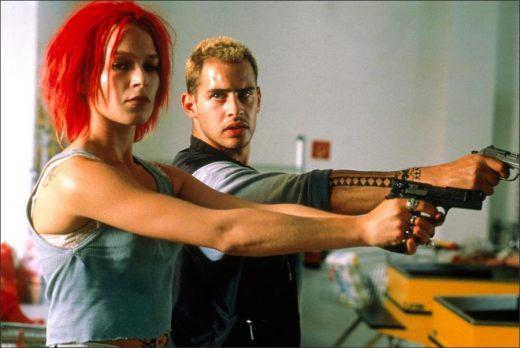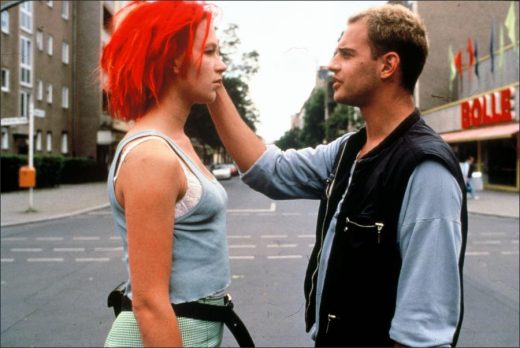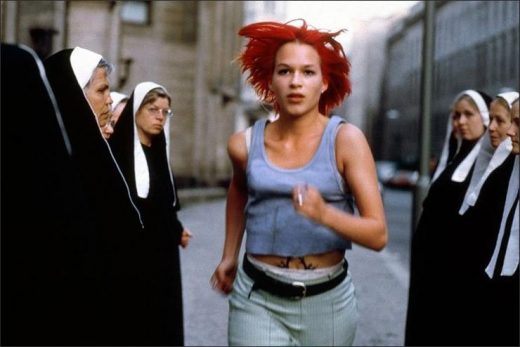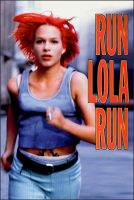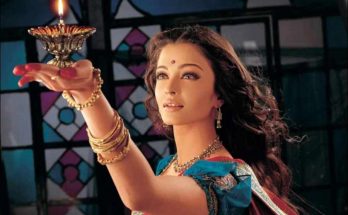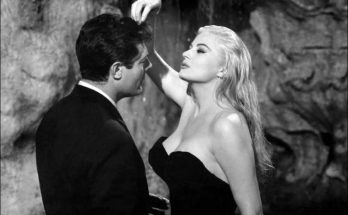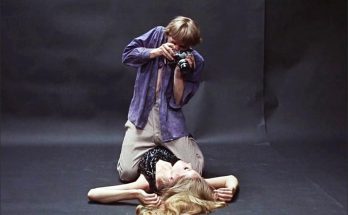Run Lola Run. Years ago, I watched this German movie for the first time at a film festival. There were few audiences in the hall and they were very lucky. Everyone was almost breathless. Years passed, and the circle of legends around Run Lola Run expanded in waves. The third feature of Tom Tykwer, one of the few names that managed to move the German cinema, was “fate or coincidence?” was looking for the answer to the question. Tykwer would later become famous for being the successor to Kieslowski. Franka Potente’s infrared hair and the scenes where she breathed in the streets of Berlin would never have come to mind again.
Unlike some of the German filmmakers, who came after Fassbinder, Herzog and Wenders, Roland Emmerich and Wolfgang Petersen, several young German directors such as Tom Tykwer have become the European equivalent of the X generation in America by combining their commercial and artistic trends. Tykwer’s premier hero in Germany with his debut film “Deadly Maria” (Die Tödliche Maria) in 1993, his second film “The Hibernating” (Winterschlafer) in 1997 and ultimately the 1998 run “Run Lola Run” (Lola Rennt). it was.
With his first film, “Deadly Maria,” Tykwer was able to successfully tell a dramatic story that was obscured by black humor, and then brought the German Film Critics Award to his home from the Berlin Film Festival. “Deadly Maria” tells the story of a woman living under the pressure of her husband and bedridden after she decided to change her life completely when she met love one day. Even in the first film of Tykwer, he has a problem with the phenomenon of ‘fate’.
Another variation of Maria’s struggle against her fate appears in the second film of the director in a slightly more complicated and skillfully crafted way. “Hibernates” is a romantic thriller movie in which the lives of six people who believe that everything is going very well are mixed with a traffic accident. In the foothills of the Alps, the fate of six people clash in the winter. Many lives change when a small wick is ignited.
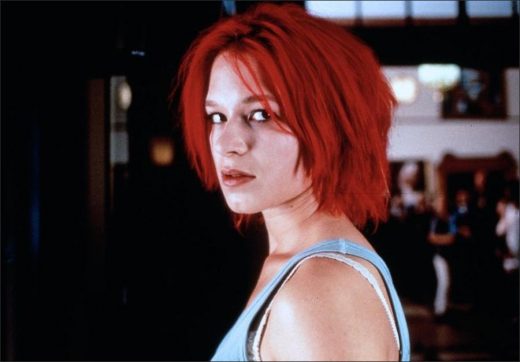
What’s that thing called ‘fate’
“Run Lola Run” is a movie that approaches the concept of “destiny” in several ways:
1. Human lives constantly collide, cross, and affect each other.
2. Even the tiniest detail can deviate greatly from our life curve.
3. The choices we make in some situations that we encounter lead our lives.
Our lives constantly intersect with other people’s lives. A small detail in someone else’s life during the day changes our lives without our awareness. Did these changes really happen at once, or is it already ‘obvious’ that if we think in the concept of ‘destiny’? See. “Shattered Love and Dogs” (Amores Perros, 2000).
Is there a difference between our lives when we took the subway we tried to catch up in a hurry and when we missed it? See. “This is Random” (Sliding Doors, 1998).
Do some of the decisions we make somewhere in our lives take us entirely in another direction? See. “Actually It Was Yesterday” (Groundhog Day 1993). The difference of “Run Lola Run” from these examples is that it can tell us the “one” story in three different versions. The difference between the versions is the choices made by the lead character and the changes brought by the instant situations that come before him. Chained interactions that are never brought together by accident, created by small details about life.
What the director, who has gone through such a difficult job, does to force it even more is more interesting. Because Tykwer adds to the race over time. Moreover, he can successfully build his story on an almost real-time narrative.
What kind of movie is this?
Tykwer starts his movie like a horror movie. We slowly go up from the monster-figured gong of a wall clock. The clock is full of wood carved devil figures. Time is running fast. The camera goes up and enters the mouth of the devil figure at the top of the clock. It’s a tiny clue that we’re going to watch some kind of time travel story.
Then we dive into a huge crowd of people. We choose four people among the crowd that we will later recognize in the story, and then the narrator, one of Germany’s most famous fairy tale tellers, speaks out: “Human beings are perhaps the most mysterious being on our planet. It’s a mystery of unanswered questions. Who are we? Where do we come from? Where are we going? How do we know what we think we know? Why do we believe them? Numerous questions are looking for answers, and one answer raises a new question. The answer to that question is another question… It goes on like this. But wouldn’t it always be the same question in the end? And always the same answer? ”
We find a guard through the crowd. Guard Schuster looks at us and speaks: “The ball is on the field. The game is 90 minutes. This is real. The rest is all about theory. So let’s get started.”
At the very beginning of the film, the famous writer T.S. Quoting from Elliot, Tykwer also includes a sentence by Sepp Herberger, one of Germany’s most famous football coaches: “The end of the match is the beginning of the match.” In fact, what the guard said is the words of this famous coach and he has become classic in the world of football: anything can happen during the match. The only thing certain is that the ball is in play. And the match is 90 minutes. It doesn’t end until it is over,
And the game begins
Guard Schuster takes a soccer ball from the ground and sews it into the air. Starts the game. The camera that takes off with the ball shows us how all this crowd of people come together and form the name of the movie from above: Lola Rennt. The ball falls and the animation starts generically.
There’s a reason Tykwer has associated his movie with a football game, of course. The soccer ball is the fate of Lola (Franka Potente) and her boyfriend Manni (Moritz Bleibtreu). In three different versions, the ‘fate’ of Lola and Manni is on the field. Another starts after one match. So Lola makes three matches with ‘fate’.
We follow the image of a young girl running towards a large table clock at the beginning of the credits. The girl runs to the table clock and dives into it. Just like in the first opening, there are teeth inside the clock. Tykwer seems to be persistently saying that we will run in ‘painful’ time.
Tykwer made a separate generic for player names. In the obsolete movie effect, each player’s name is presented with their own character name as if they were taken while expressing at a police station. Then we descend from the sky (as if a hand from the top chooses a random life) and quickly glide through an apartment in Berlin. We meet Lola, the red-haired girl who opens a ringing phone. Tykwer sets up the skeleton of the story very quickly and quickly in this phone call. Her boyfriend, Manni, panicked at a phone booth, called Lola. From the dialogues in this scene in the epilogue logic, we understand:
Manni works for a small-scale gangster named Ronnie. He sells some jewelery on her behalf and puts her money in a small bag and waits for Lola to pick it up. However, Lola, who entered a market to buy cigarettes on the road, stole her scooter. Although he tries to catch up with a taxi instead of an appointment, he fails. Manni, who was left alone, had to take the subway alone. Everything seems to be on its way up to there. However, when Manni forgets the bag inside the subway, things will turn up. It is a good day for a homeless and tacky man who noticed the bag full of money on the train.
Now Manni tells her boyfriend Lola that her boss Ronnie will definitely kill her, and asks Lola to help him in a shaved way. It needs 100,000 Marks in 20 minutes. Otherwise, he will be killed. Manni explains it all in a very panicked way. Towards the end of the stage, we hear the first of Lola’s famous screams that she will make throughout the movie. Lola screams these screams in order to freeze the emerging chaotic situations. This is similar to the power a computer game hero has. (He will start the computer game soon.)
He tells Lola Manni to wait and be there with him 20 minutes later. Manni looks at the clock and tells Lola that she will enter the market opposite the phone box at 12:00 and rob the place. Although Lola insistently says that she will do nothing and find something, Manni’s phone card is exhausted. Lola looks at the clock on the wall: 11.40. He thinks who can get the money from. “Father” stands out among many acquaintances and relatives. And Lola’s fate and her first struggle with time begins.
He should mention a remarkable situation in this opening part of the movie. As a matter of fact, there is a detail about the language of the movie and the world of Tykwer. Although the scenes where Lola and Manni appeared in the movie were shot 35mm, the scenes they did not show were shot with a video camera. Tykwer chose to distinguish Lola and Manni from this abundant layered structure in this way. He also showed this couple in love with each other in a colorful, lively and very “clear” way as the most sincere characters of the movie. Others are pristine, pale, artificial and synthetic, like a video image next to this lover couple. The scenes where Lola and Manni appear are like the center of the world. It is real.
We have a movie that starts very fast and energetic. Fast music, short plans, crooked and tilted frames, different image formats, visual effects, “slow-motion”, non-stop camera movements… The instructors in cinema schools would probably leave their students in the classroom using them in a single movie. Moreover, even in the episode until the 12th minute of the movie, it is possible to come across all of them.
Next Page: You should follow the movie’s unique mathematics very well.
Run Lola Run (1998)
Directed by: Tom Tykwer
Starring: Franka Potente, Moritz Bleibtreu, Herbert Knaup, Nina Petri, Joachim Król, Armin Rohde, Heino Ferch, Suzanne von Borsody, Sebastian Schipper, Julia Lindig
Screenplay by: Tom Tykwer
Production Design by: Alexander Manasse
Cinematography by: Frank Griebe
Film Editing by: Mathilde Bonnefoy
Costume Design by: Monika Jacobs
Set Decoration by: Irene Otterpohl
Art Direction by: Attila Saygel
Music by: Reinhold Heil, Johnny Klimek, Tom Tykwer
MPAA Rating: R for some violence and language.
Distributed by: Prokino Filmverleih
Release Date: August 20, 1998
Views: 592
